
High Impact Employee Stress Reduction and Wellness Promotion Delivered via Digital Mobile Technology in the Construction and Aviation Industries
*Corresponding Author(s):
George A GellertWellteq, Australia, Canada, Singapore, United States
Tel:+1 210 382 1664,
Email:ggellert33@gmail.com
Abstract
Objective
To evaluate the impact of an on demand, digital mobile application deployed via smartphone on subjectively perceived and objectively measured stress levels of employee participants in a mobile digital stress reduction program within two corporate enterprises, as well as on self-reported wellness indicators.
Methods
A 6-month employee stress reduction program was implemented using a smartphone application with employee populations in Australia working in the construction industry and in commercial aviation. Participating employees were challenged to record and improve their perceived subjective and objectively measured stress levels, and other key wellness indicators. The intervention methods included providing easy to assimilate, timely education on the criticality of stress management, as well as conveying and reinforcing supportive motivational messaging and self-help tools at critical junctures. Straightforward messages imparted specific, personalized and practical educational content, tips and resources around the importance of stress reduction and on “how to” manage and reduce stress. Personal performance statistics were conveyed to each employee user, and awards and incentives deployed to increase program compliance and completion. Participants’ stress levels were recorded objectively via Garmin wearable’s measurement of heart rate variability.
Results
Among construction industry employee participants, 54% reported decreased stress at work, and 18% stated that home stress decreased after a single 6-month program implementation. Cigarette use decreased markedly with 25% of participating construction employees quitting during the study period. Twenty-nine percent reported improved energy levels, 30% were able to reduce consumption of sugary drinks, and 15% reported greater psychological and emotional resiliency. One in four increased regular consumption of nutritious foods and reduced consumption of alcohol, and 64% reported feeling healthier after participating in the mobile digital program. Almost half of participants stated they perceived improvement in their job performance. Commercial airline employee participants reported reduced stress at work (41% reduction), and at home (38% reduction). Airline employees indicated that they would like to participate in future programs, and the airline’s net promoter score (NPS) improved substantially following mobile digital program implementation, with “very likely to recommend workplace” increasing by 9%, and its score of “very unlikely to recommend workplace” decreased by 50%.
Conclusion
The digital mobile employee engagement and program implementation evaluated in this study delivered a clinically meaningful reduction in perceived stress and other key wellness parameters. Because of the automation and rules-driven customization enabled by mobile application-based digital media, programs to reduce stress can be deployed rapidly at scale across large employee/enterprise populations in multinational settings. These results and impact achieved across a complex multicultural employee and enterprise setting are indicative of the power and value that digital mobile stress reduction and wellness engagement can deliver to employees.
Keywords
Employee stress reduction, employee wellness, employee health promotion
Introduction
Reducing the Preventable, Insidious and Costly Destructive Impact of Employee Stress
The damaging effects of psychological stress on overall health and wellness and the risk of developing or exacerbating specific disease states have been well documented [1,2]. Chronic stress can impair critical brain functions such as memory, cognition and learning, and can impact the normal, healthy physiological functioning of the cardiovascular, immune, gastrointestinal and endocrine systems [2]. In the workplace, employee exposure to intermittent or high sustained/chronic stress can contribute substantially to elevated absenteeism, decreased worker productivity, decreased quality of work performance, high rates of avoidable health care seeking and avoidable care utilization and cost [3].
Additionally, occupational stress is not only detrimental to employees’ overall mental and physical health, but it can also increase avoidable exposure risk and the effects of chemical, injury and physical hazards on worker health and wellbeing [4]. Respiratory and skin symptoms injury rates in some industries are substantially exacerbated by stress [4]. Stress can make demanding work tasks more difficult and dangerous, and mitigating employee stress at work is a top priority in many enterprises. High stress at work can impact and magnify existing psychological and mental health strain experienced by employees beyond the workplace [5].
As a result, employee stress management and reduction are of critical importance in any industry enterprise effort to advance the wellness of its workforce. This paper will review the impact of a mobile digital smartphone mediated behavioral intervention aiming to decrease employee stress in two different industry segments in Australia, one in commercial aviation and the other in the construction industry. The objective of this study was to evaluate the impact of this stress reduction and wellness enhancing program and digital platform, which sought to help the two enterprises reduce the risk associated with stress as a contributor to leading chronic diseases and common injuries, poor job performance, potential avoidable health care costs and related absenteeism, while boosting employee wellness and job satisfaction [6,7].
Methods
Combining Engagement, Education, Incentives and Technology to Reduce Stress and Improve Wellness
Intervention Objectives and Technology Deployed
An on demand, digital interactive mobile application was deployed via smartphone to engage, educate, socially connect and motivate employees in a stress reduction and wellness improvement program. The application and platform used to deliver the intervention suite and to capture impact data was the Wellteq V.1 smartphone application. The program objective was to drive specific digital stress reduction, wellness education, engagement content and functionality to employee participants, and then measure the impact of the program. The most frequently used vehicle engaged by participants to receive communications and share their data was their personal smartphones.
A 6-month program of onsite and digital wellness and two 4-week stress reduction challenges were implemented for a leading Australian construction firm. This was supported by onsite health practitioners who conducted physical health checks and engaged additional in-person education sessions. At the commercial airline a single 4-week team challenge was implemented. Both implementations deployed a digital mobile platform with continuous stress monitoring via Garmin Vivosmart wearables, in-app wellness surveys, and onsite health assessments. The on demand mobile application and platform engaged, educated and motivated participating employees, and also measured the impact of the program on self-reported stress reduction and the adoption of health promotion/illness risk reduction behaviours. Figure 1 illustrates the functionality through which participating employees were engaged and conveyed education and motivation to drive stress reduction and wellness promotion.
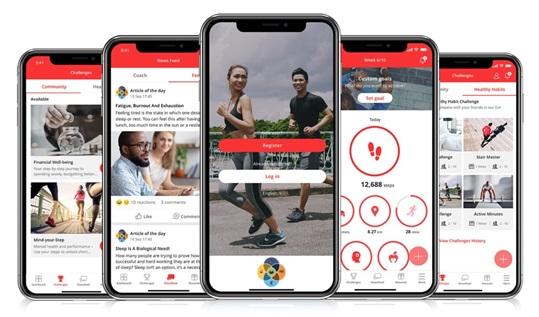 Figure 1: Mobility of Engagement, Content Delivery, Functionality, and Impact Measurement.
Figure 1: Mobility of Engagement, Content Delivery, Functionality, and Impact Measurement.
Study Setting
The stress reduction and wellness promotion program was implemented in two enterprise settings within the employee populations of a leading construction firm in Asia/Australia and a leading commercial airline. All participants owned mobile smartphones onto which the stress reduction and wellness promotion application was downloaded and through which engagement and messaging occurred.
Study Participants and Selection
There were 97 employee participants from the construction industry enterprise, of whom 89% were female. Job roles included were labourers (32%), engineers (31%), office staff (20%), operators (13%) and administration (4%). At the international commercial airline, 126 employees participated. In both settings, employees opted in to program participation through their existing employer benefits and support offering.
Intervention Content and Outcomes Metrics Captured
The stress reduction intervention methods deployed over the course of the 6-month program included easy to assimilate, timely online and onsite employee stress education, challenges and physical activity promotion. These were enhanced with targeted mental wellbeing e-learning and content modules on the importance of, and methods for, reducing avoidable stress. All interventions were embedded within a communication and engagement framework that conveyed emotionally reinforcing and supportive motivational messaging at critical junctures. Straightforward messages conveyed personalized practical educational content, tips and resources around the importance and “how to” of reducing stress and promoting wellness.
Personal program performance metrics and statistics were conveyed to employee program participants, and awards and incentives deployed to increase adoption of stress reduction and general wellness promoting behaviors, and program compliance and completion. The digital engagement and education programs were designed based on peer reviewed scientific evidence of behavioural responsiveness and sustained behavioural uptake, and can include various metrics including attitudinal/perception and knowledge-based indices, and physiological measurements such as stationary heart rate variability or acceleration (a stress indicator).
The digital program included the application of brief health risk and status assessments with a focus on attainable employee health behaviour change objectives, in this case perceived reduction in workplace and home stress along with several general wellness indicators. Baseline levels of experienced stress were captured through participant surveys that generated high response, and wearable device monitoring of at rest, non-exertional heart rate variability. This data capture was leveraged in an individually targeted manner to motivate engagement of critical and needed stress reduction behaviors and cognitive techniques. Education about the unhealthy impact of stress and how to manage it through increased mindfulness, active stress reduction, and cognitive and physical relaxation techniques was communicated through the app as well as onsite engagement. Mobile app content and functionality were deployed in a manner that dovetailed into and was synergistic with onsite engagement.
Combining Garmin’s powerful wearable device capabilities with sophisticated employee data analytics and insights engines enabled a mapping of the daily lifecycle of individual stress among airline employee participants. Changes in the measured non-exertional heart rate variability, or HRV, over the course of 24 hours served as a sensitive indicator of experienced stress level.
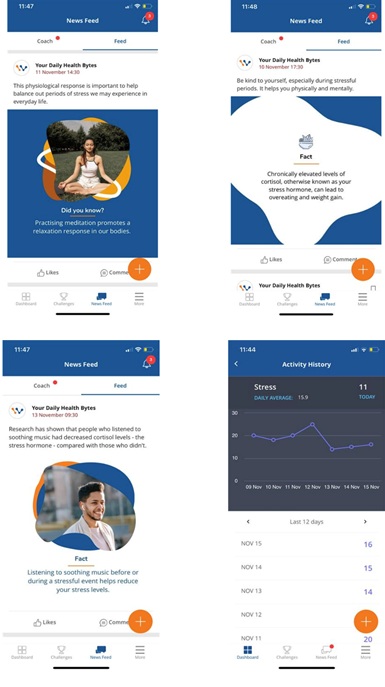
Figure 2: Program Samples of User Stress Reduction Engagement, Education and Monitoring.
Results
Demonstrated Reduction in Stress and Increased Perceived Wellness
Construction Industry Employees
As seen in Figure 3 below, as a result of deploying a mobile digital intervention, 54% of construction industry participants reported decreased stress at work, and 18% stated that home stress decreased. This occurred after a single 6-month program implementation at the enterprise and can serve as the basis for future programs to further advance and sustain stress reduction.
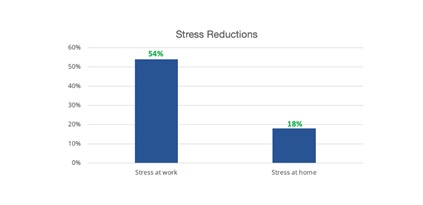 Figure 3: Percent of Construction Industry Employees Reporting Stress Reduction at Work and at Home at Conclusion of 6-Month Wellteq Program.
Figure 3: Percent of Construction Industry Employees Reporting Stress Reduction at Work and at Home at Conclusion of 6-Month Wellteq Program.
The 6-month program included two 4-week team stress reduction challenges. It also helped drive other meaningful employee health promotion and risk reduction improvements over the program period among construction industry employee participants. For example, cigarette use decreased markedly with 25% of participants quitting, illustrating the efficacy of strategically deployed personalized digital engagement technology against even a very entrenched addiction. In addition, a decrease in consumption of sugary drinks reinforced and helped drive the overall nutritional/dietary improvements that participants accomplished during the program. This delivers much needed chronic disease risk and prevention impact specifically to those at elevated risk of metabolic diseases such as diabetes. Twenty-nine percent reported improved energy levels, and 15% reported greater psychological and emotional resiliency, as shown in Figure 4.
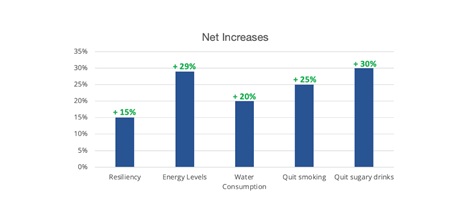 Figure 4: General Health Benefits Realized Among Construction Industry Employees.
Figure 4: General Health Benefits Realized Among Construction Industry Employees.
Figure 5 shows that one in four construction industry employee participants increased their regular consumption of nutritious foods and reduced their consumption of alcohol. This may have contributed to every sixth participant achieving a reduction in their waist measurement as well. Sixty-four percent reported feeling healthier after participating in the program. Almost half of participants stated they perceived a distinct improvement in their job performance. The success of mobile digital employee engagement is reflected in a remarkable 82% of employees stating that they would readily participate in the health promotion program again.
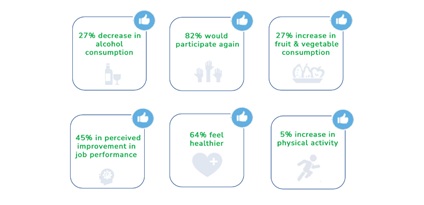 Figure 5: Health Improvements Realized Among Construction Industry Employees.
Figure 5: Health Improvements Realized Among Construction Industry Employees.
Airline Industry Employees
In commercial airlines, where compromised work performance due to psychological and/or physiological stress can potentially result in work-related injuries or deaths, high or very high stress levels were observed in a substantial minority of employees. In this setting a four-week stress reduction challenge was implemented, comprised of teams of five employee participants with unlocking educational modules focused on the key strategies to improve mental wellbeing, with additional lifestyle and risk reduction engagement content sent into a mobile newsfeed. As seen in Figures 6 and 7, about 20% of airline employee participants in the stress reduction and enhanced wellness program reported experiencing high or very high stress levels, and were suitable targets for a stress reduction program.
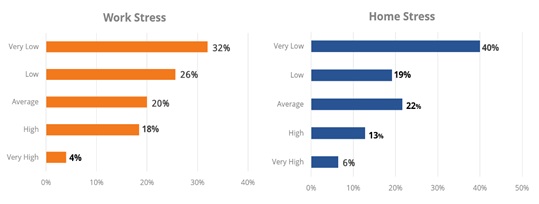 Figure 6: Stress Levels Reported by Airline Employees.
Figure 6: Stress Levels Reported by Airline Employees.
As a result of the digital mobile employee engagement program, perceived stress decreased among a substantial segment of airline employee participants both at work (41% reduction), and at home (38% reduction):
 Figure 7: Pre- Vs. Post Program Stress Reported by Airline Employees at Work and Home.
Figure 7: Pre- Vs. Post Program Stress Reported by Airline Employees at Work and Home.
These levels of stress reduction represent a meaningful employee impact in clinical chronic disease and injury risk mitigation, and can potentially deliver valuable enhancements to work productivity, job performance and likely employee satisfaction, retention, and reduction of employee turnover.
In addition, combining Garmin’s powerful wearable device capabilities with sophisticated employee data analytics and insights engines enabled a mapping of the daily lifecycle of individual stress among airline employee participants. Figure 8 maps the measured non-exertional heart rate variability, or HRV, over the course of 24 hours, which is a sensitive indicator of experienced stress level.
These figures are striking in demonstrating how stress levels vary markedly over the course of a day, and demonstrates that participants do not clearly segment and have a wide outlier distribution distant from the mean curve plotted. While some employee participants experienced sustained high levels of stress, others experience sustained low stress. Mobile digital engagement of stress reduction can target highly stressed employees to achieve needed reductions in work-related stress, decreasing their personal (and enterprise) risk of injury, critical performance error rate, poor work performance/productivity, adverse employee health impacts, and avoidable health care utilization and costs.
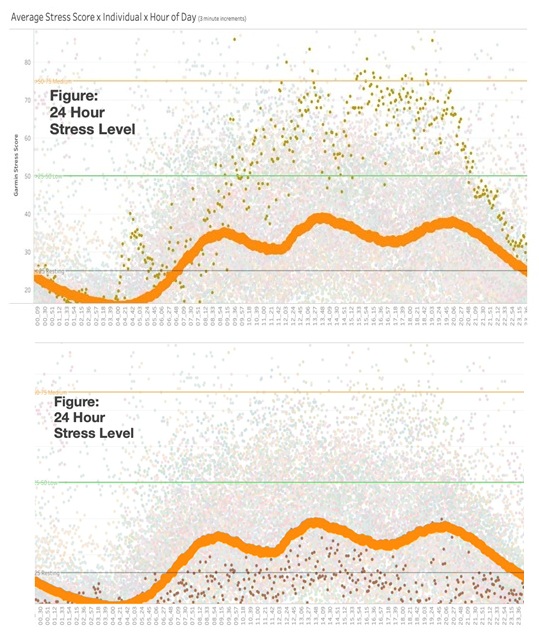 Figure 8: Distribution of Heart Rate Variability Stress Indicator Levels Reported by Airline Employees Over 24 Hours.
Figure 8: Distribution of Heart Rate Variability Stress Indicator Levels Reported by Airline Employees Over 24 Hours.
These analytics enable highly targeted digital stress reduction, wellness education and psychosocial support engagement that is personalized, time flexed and includes mental health nudges. It also contains the ability to send customized stress reduction prompts and communications to employees as needed and in real time. Employers can not only target individuals at greatest risk of elevated stress, but also the specific time of the workday when stress mitigation efforts can help to reduce the most acute intensity of stress experienced.
A key benefit of mobile digital engagement, monitoring and analytic capabilities is the learning derived from data aggregated in an anonymized user population database. This enables analyses that compare enterprise stress and wellness factors across industries. For example, as seen in Figure 9, a comparative study of biometric stress across two differing industries—in this case the commercial airline and a logistic industries—in this case Garmin stress scores averaged across employee participants and then contrasted by time of day. The two industries demonstrated very different stress profiles over the course of 24 hours, not only in absolute levels of stress measured, but with respect to when stress peaked for employees in each company.
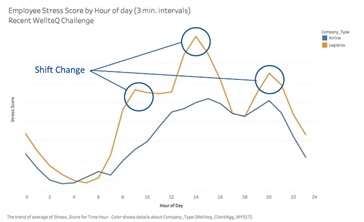 Figure 9: Peak Employee Stress Level by Industry and Time of Day.
Figure 9: Peak Employee Stress Level by Industry and Time of Day.
Based on these 24-hour stress maps or profiles, employee digital stress reduction could be customized for each industry and enterprise, targeting the specific times when stress levels peak in each.
Discussion
Employee Health Improvement and Risk Reduction Requires a Discrete Focus on Stress Reduction
The digital mobile employee engagement and program implementation evaluated in this study delivered a clinically meaningful improvement in employee stress reduction, and thus overall health and wellness. Because of the automation and rules-driven customization enabled by web-based digital media, programs to reduce population stress can be deployed rapidly at scale across large employee/enterprise populations in multinational settings to achieve employee health and wellness improvement objectives. Research evidence supports the expectation that reducing stress favorably impacts employee safety, satisfaction, productivity and performance [8,9].
These results and program impact achieved after a stress reduction challenge in complex multicultural employee and enterprise settings are indicative of the power and value that digital mobile wellness engagement can deliver to occupational/employee health. The findings illustrate how high value programs deploying this technology can have an impact across general physical and mental health wellness, targeted health promotion focused on chronic disease prevention and specific risk reduction such as for stress, and potentially the associated avoidable health care utilization and enterprise costs.
The highly favorable employee response to these mobile digital stress reduction and wellness promotion programs can also be quantified and demonstrated. Enterprise and employer Net Promoter Scores (NPS) can be captured during the implementation of wellness and risk reduction programs for employees. An enterprise’s NPS is the likelihood of an employee recommending the employer or organization to others [10]. This increase in positive, beneficial employee perceptions of the enterprise and their employer can contribute meaningfully to improved employee job satisfaction and retention, while reducing avoidable costs due to employee turnover [11].
Besides high percentages of employees indicating that they would like to participate in future programs, the commercial airline company’s NPS among employee participants improved substantially following mobile digital program implementation. The airline’s NPS score of “very likely to recommend workplace” increased by 9%, and its score of “very unlikely to recommend workplace” decreased by 50 percent.
Conclusion
The Future of Employee Stress Reduction and Wellness is here, and it is Digital
This study quantitatively and compellingly demonstrates the impact, utility and value of digital mobility deployed against difficult to modify behaviors in occupational settings, including at the workplace and at home, for improvement of experienced/self-reported and objectively measured stress. Given that high stress levels are significant predictors of workplace accidents and are contributors to acute and chronic mental health conditions such as anxiety and depressive disorders, the stress reduction achieved within the participating employee cohort was clinically meaningful [8, 9,12].
The digital mobile employee engagement strategy used in these mobile digital stress reduction and wellness promotion programs align well with emerging digital remote monitoring technological capabilities to impact a wide variety of clinical disorders, such as asthma and chronic obstructive pulmonary diseases, both of which can be exacerbated by stress. For stress reduction, digital mobility and remote monitoring, using unobtrusive wearable devices offer a less artificial setting for mental health assessment versus a medical professional’s office or clinic. These highly successful engagements of employees from two very different industry settings deployed a multimodal digital technology suite to assess and decrease employee stress while improving wellness, and delivered clinically meaningful results.
Driving stress and health risk reduction in a well-planned employee wellness management effort can realize a major impact in potentially any enterprise or industry. Reducing stress in the workplace also appeals to employers who wish to increase their NPS score and employee job satisfaction [6]. As stress increases within a workplace, employee job satisfaction decreases, which can lead to high levels of absenteeism and employee turnover [7]. Deploying mobile digital programs will decrease employee stress and potentially improve employee job satisfaction, performance, and productivity.
Acknowledgement
The authors are grateful to the construction industry and commercial airline industry leaders and employees who participated in this digital stress reduction and wellness improvement program.
References
- Dragos D, Tanasescu MD (2010) The effect of stress on the defense systems. J Med Life 3: 10-18.
- Yaribeygi H, Panahi Y, Sahraei H, Johnston TP, Sahebkar A (2017) The impact of stress on body function: A review. Excli J 16:1057-1072.
- Van der Klink JJ, Blonk RW, Schene AH, van Dijk FJ (2001) The benefits of interventions for work-related stress. Am J Public Health 91: 270-276.
- Kyaw-Myint SM, Strazdins I (2015) Occupational stress. In CD Butler, J Dixon, AG Capon (Eds), Health of people, places and planet: Reflections based on Tony McMichael’s four decades of contribution to epidemiological understanding. ANU Press, Pg no: 81-94.
- Beehr TA, Jex SM, Stacy BA, Murray MA (2000) Work stressors and co-worker support as predictors of individual strain and job performance. Journal of Organizational Behavior 21: 391-405.
- Kelloway EK, Barling J, Shah A (1993) Industrial relations stress and job satisfaction: Concurrent effects and mediation. Journal of Organizational Behavior 14: 447-457.
- Ajayi MP, Amimbola OH (2013) Job satisfaction, organizational stress and employee performance: A study of NAPIMS. IFE Psychologia: An International Journal of Psychology in Africa 21.
- LaMontagne A, Keegel T (2012) Reducing stress in the workplace an evidence review: full report. Victorian Health Promotion Foundation, Deakin University Research Repository
- Quick JC, Murphy LR, Hurell JJ (1992) Stress and well-being at work. American Psychological Association. APA Psyc Net.
- Reichheld FF (2003) The one number you need to grow. Harvard Business Review
- Gupta S, Zeithaml V (2006) Customer metrics and their impact on financial performance. Marketing Science 718-739.
- Hilton MF, Whiteford HA (2010) Associations between psychological distress, workplace accidents, workplace failures and workplace successes. International Archives of Occupational and Environmental Health 86: 923-933.
Citation: Gellert GA, Montgomery S, Gillett J, Gellert TE, Hole J, et al. (2021) High Impact Employee Stress Reduction and Wellness Promotion Delivered via Digital Mobile Technology in the Construction and Aviation Industries. J Community Med Public Health Care 8: 099
Copyright: © 2021 George A Gellert, et al. This is an open-access article distributed under the terms of the Creative Commons Attribution License, which permits unrestricted use, distribution, and reproduction in any medium, provided the original author and source are credited.

